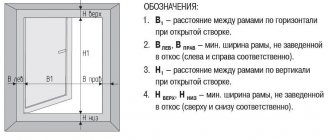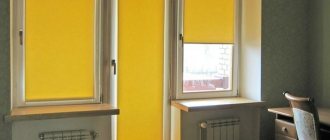Nowadays, not a single kitchen space is complete without a set of cabinets for storing kitchen utensils, cereals, detergents and cleaning products. It’s not for nothing that when translated from German, Schaff sounds like putting things in order.
The first prototypes of modern cabinets were recesses hollowed out in the walls and floors of caves, which were the dwellings of ancient people. Food storage facilities were also built in tree hollows at a height inaccessible to wild animals.
Over time, people learned to make boxes for storing food and personal belongings. Later they began to attach lids to them. The products became more and more similar to the cabinets we are used to. The first mention of wooden boxes found in Egypt dates back to the 3rd century BC. Boxes with lids came to Europe thanks to the Greeks and Romans.
It took more than a hundred years until rough drawers turned into analogues of our usual wardrobes with shelves and drawers. If we compare modern kitchen furniture with that produced several decades earlier, the design, the list of materials used for their manufacture and cladding, finishing details, fittings, and fastening methods have changed.
Types of modern wall kitchen cabinets
Along with the appearance, the filling of the cabinets has changed. They have acquired greater functionality and ease of use. There are cabinets equipped with a roll-out system, racks that rotate around a rigidly fixed center. This creates additional ease of access to kitchen utensils and food supplies.
All wall kitchen cabinets are attached to the back wall and have the same design, consisting of a frame, shelves and front. Chipboards are used to cover the back wall; solid wood, MDF, chipboard, and LMDF are used for the facade. The industry produces several types of wall cabinet designs:
- Open type, which are not much different from shelves and racks designed for storing various works of art, vases, photographs, and printed literature. On shelves that are not closed with doors, you can conveniently place spices in decorative boxes, vases with cookies and sweets, containers with coffee and tea.
- Closed type, which have standard shelves closed with hinged doors. The cabinets are designed for storing kitchen appliances, detergents, sponges, napkins, and for building in multi-tiered drying structures.
- Combined type, which combines all the characteristic features of closed and open wall cabinets.
There are not only simplified versions of wall-mounted kitchen cabinets, but also a variety of square and corner ones designed for drying dishes and installing exhaust hoods. They all have different shapes, sizes, color options, and filling capacity.
Cabinets with built-in drying racks for plates, cups, and glasses are usually hung above sinks with a kitchen faucet. Structures are installed above the kitchen stove where exhaust devices are placed.
Corner designs allow you to use all the free space of wall cabinets, including areas that can be difficult to reach. They can be shaped like the letter G; trapezoidal and straight wall cabinets with beveled corners are available. With wall-mounted vertical cabinets, the ceiling height visually increases and the interior takes on a complete look.
Lately, tall vertical kitchen wall cabinets that reach the ceiling surface have been gaining popularity. The design is especially relevant for small kitchens and families who have many different kitchen appliances for cooking. True, to get to the upper shelves, you will have to use small stairs.
Horizontal wall cabinets visually make the kitchen wider, expanding its boundaries. And the upper and lower niches of wall cabinets increase the space for storing necessary items and equipment in the kitchen.
Determining the hanging height
The aesthetic component of the interior and the ease of use of the kitchen as a whole depend on the height at which the kitchen cabinet hangs. There are certain standards according to which wall cabinets are installed at a height of 550 to 600 mm from the level of the countertop. This distance is quite enough so that the hostess does not touch them with her head and does not reach for the top shelf on tiptoe.
Much depends on the height of the housewife herself and the height of the floor modules. According to the standard, the worktop is located at a distance of 850 mm from the floor. This parameter can be adjusted by the height of the base, the standard of which is 100 mm.
On a note. The height of hanging the upper cabinets is dictated by the distance between the worktop and the floor level.
Also, the height of the working area from the floor is affected by the thickness of the tabletop, which varies from 20 to 50 mm depending on the material of its manufacture. The front edge of the working surface protrudes from the facade by 30-40 mm, and the rear edge by 50-100 mm. This supply of hidden space is often useful for placing communications.
Fastening cabinets to rails
Rack fastening is one of the most popular modern fasteners. It can be recognized by the mounting plate, which looks like a strip cut out of metal, with a canopy. The canopy with a hook for the slats is hidden in a plastic case. Before installing the slats, mark the fastening points at an equal distance from the floor surface.
The mounting rail is attached to the kitchen wall using dowels or self-tapping screws. Each of the canopies, equipped with a hook, must protrude beyond the slats. This is necessary to adjust the hook mechanism. The design will allow you to install wall cabinets as close to the wall surface as possible.
The rack mounting greatly simplifies the installation of adjacent wall cabinets. Installed on hooks, they move freely along the rail, moving in any horizontal direction. Having decided on the rack type of fastenings, it is worth considering the weight of the kitchen cabinets. The slats may not hold heavy cabinets and become deformed, and then troubles cannot be avoided.
Installation methods
A variety of fittings for hanging kitchen cabinets allows you to choose the most optimal installation method for you. Fasteners can be selected in such a way as to make the work of the home craftsman as easy as possible. In this case, the structure will hold securely and firmly.
Methods for installing cabinets:
- On a bar with a hinge. Using a specially prepared strip with hooks greatly simplifies the work, allowing you to install cabinets accurately and without assistance.
- For hanging corners and furniture hinges. This option is much cheaper, but you can’t handle hanging cabinets alone.
Attaching kitchen cabinets to furniture sheds
Our grandfathers also used furniture canopies for wall cabinets, considering them not only the most common, but also the most reliable method of fastening. Furniture canopies are a metal plate with holes for inserting screws and self-tapping screws into them. The first step is to make precise markings on the wall, along which dowels or anchors are secured. Canopies are fixed to them, pre-attached to the rear wall of the modular structure. Oblong slots, 2 centimeters in size, allow you to slightly move the cabinets horizontally.
Preparation
The stage begins with preparing the material and tools for work.
The table below shows everything you need:
| Materials | Tools |
|
|
Next steps in the preparation phase:
- Checking the condition of the walls . If the cabinets are going to be hung on drywall, you will need embedded parts, since the fragile material is not able to withstand heavy loads. For curved walls, it is better to use a putty mixture to level the surface or mount the cabinets on a sheet of chipboard or plywood. Also, do not forget about decorative finishing.
- Marking . Using a tape measure, measure the distance from the worktop and set the laser level. If you don’t have such a tool, you can use a pencil with a ruler or a tapping thread, checking the evenness of the line with a level. It is at this mark that the lower level of the modules will be aligned.
- Preparing the site. It is advisable to prepare the space for work by clearing the tabletop of foreign objects.
For your information. By the time you hang the kitchen cabinets, it is necessary to install all sockets and switches, and also check their functionality.
How to attach a kitchen set without much difficulty - below.
Kitchen wall material for fasteners
When hanging cabinets on concrete walls, it is advisable to use anchor bolts. Installation of the planks is carried out using screws screwed into the mounting dowel. You can use corners to attach cabinets.
When hanging cabinets on walls made of foam blocks, you will need special mounting hardware. On a cellular material with air bubbles, a simple anchor, screw, or nail will not hold well. The first increased load will throw them up. A wall made of hollow material can only withstand a load with a chemical anchor, plastic or nylon dowel installed on it.
To install cabinets on drywall, use special self-tapping screws and anchor bolts to which the mounting strip is attached. But even such fastening to plasterboard walls cannot guarantee that a heavy wall cabinet with kitchen utensils will not break off and fall, breaking everything in its path. It is better to use decorative cables and tubes under heavy kitchen cabinets.
When choosing fastening options, be sure to pay attention to the material from which the kitchen walls are made.
Stages and rules for hanging cabinets
Correct fastening of the kitchen cabinet to the wall can only be ensured if a certain procedure and installation rules are followed. Everything must be done sequentially, while checking the accuracy of all measurements.
Preparing tools and components
The first step is to prepare those tools, without which the furniture cannot be installed in the kitchen. To prevent the process from taking a lot of time, it is better to use high-quality devices:
- perforator;
- drill;
- drills for different types of materials (wood, concrete, etc.);
- level;
- roulette;
- Phillips screwdrivers;
- screwdriver (if necessary);
- pencil;
- hammer.
Preparing walls for installation of wall cabinets
Before you begin installing wall cabinets, you must complete all electrical wiring and installation of all electrical equipment, such as sockets and switches. Then the surface of the walls is leveled and defects are removed. Some people neglect this procedure, believing that wall errors will not be visible behind the cabinets. But in order for the quality of installation to meet accepted standards, finishing work should not be neglected.
Construction beacons fixed to the wall with plaster will help level the surface of the wall. A solution is applied on top of them. After it hardens, the surface of the walls is leveled. Small differences in the level of plastered walls are equalized with a solution of finishing putty. After completing the preparatory work, you can begin installing the wall cabinets.
Installation instructions
Methods for installing cabinets vary in level of complexity. The installation method directly depends on the chosen mounting option: cabinets of different heights cannot be installed on a rail.
Let's consider both mounting options.
On the rail
We attach the cabinet to the wall according to the bottom marking line and knock off the top one. This will simplify the task if the modules are planned to be mounted at the same height.
Further:
- We drill holes in the wall for the slats according to the markings.
- We drive dowel nails into the holes and firmly fix the rail.
- We hang the cabinets on the fixed bar.
- We level the modules using adjusting screws.
- We drill through holes in the side walls of the cabinets.
- Starting from the corner one, we connect the modules to each other.
The final stage of attaching the cabinets to the rail will be the installation of facade elements.
On hinges or corners
At the initial stage, this method differs in that the height of each module is noted separately. In the same way, attach each cabinet to the bottom fastening line and draw the top line.
On a note . The method of installing cabinets on corners differs from the option with hinges only in the place where the elements are attached. The corner is screwed to the upper end of the side of the cabinet, and the hinge is screwed to the back.
Further:
- We screw hinges or corners to the cabinets in the right places.
- We lean the corner module against the wall and place the fastening points.
- We drill holes in the wall according to the marks.
- We hold the wall cabinet in the desired position and use hardware to attach it to the wall.
- In this way we fasten module by module, checking the evenness of their joining and the top.
When all the cabinets are already hanging in their places, we tighten them tightly with through bolts and install the front parts.
How to place it correctly?
There are a few simple rules:
- accessibility of food, dishes and other kitchen utensils stored in the closet - to ensure this possibility, it is recommended to place pieces of furniture at a given distance from the countertop, and not under the ceiling;
- cabinets should not interfere with air circulation, so they are installed next to the ventilation grille, and it is prohibited to close the entrance to the duct;
- pieces of furniture in the kitchen are placed so that they do not spoil the geometry of the room.
The distance is enough to place all kitchen appliances on the table. Moreover, more often they choose an option within 45-50 cm. A distance of 65 cm and above in most cases determines the position of the hood (from the countertop to its lower edge).
You should also focus on the growth of the residents of the house. Possible options:
- If a person's height is between 155-160 cm, the recommended height from the floor to the top shelf is 175 cm.
- If your height is 160-170 cm, the top shelf should be located at a height of 190 cm.
- For tall home owners (height 170-190 cm), a suitable option is when the top shelf is at a height of 200 cm.
If you do not follow these recommendations, it will be difficult to freely use dishes and kitchen utensils located in cabinets. You will have to use a stool for this purpose. In addition, you need to check at the installation stage that the hanging furniture is level. Any distortions can lead to the collapse of part of the kitchen equipment. In this case, the appearance of the interior also deteriorates. A building level should be used to check the position of the cabinets.
Almost always, wall-mounted and floor-standing pieces of furniture are placed so that they are on top of each other. Otherwise, the set will not look organic and symmetry will be lost. If necessary, cabinets are positioned higher or lower than existing standard values. However, before you finally drill holes in the wall, you should make sure that a person can easily reach the top shelf. Recommendations for calculating the installation height of cabinets:
determine the height of all residents of the apartment, take the average value - if you focus on only 1 family member (the tallest or shortest), then the rest will be uncomfortable using the furniture; take into account the dimensions of the upper cabinets; The most harmonious look is the set, which occupies most of the wall, for this reason, when choosing, you need to focus on the height of the ceilings of the room; sometimes it is important to make the apron high enough (for example, when installing specific decorative elements, the upper cabinets are raised additionally); The style direction in which the set is made is also taken into account (sometimes it is necessary to place cabinets at some distance from each other)
Advantages and disadvantages of the plank
This simple design has a number of advantages, which is why it has gained its popularity:
- Even non-professionals - people with basic construction skills - can cope with the installation.
- When installing adjustable awnings, there is no need to measure and drill holes for each wall hanging cabinet separately. The general level is reflected.
- Using anchor bolts you can adjust the position of the cabinets. They can be placed on the same level, regardless of the flaws of the wall.
- Unlike fastenings for wall-mounted kitchen cabinets with dowels, a design with a strip is considered more “durable” and reliable. Even if a couple of screws loosen over time, the rest will hold well even when the cabinets are as full as possible.
The system has no global shortcomings. The only thing you should keep an eye on when purchasing a bar is the quality of the material. Low grade metal will bend a lot and may even break during furniture installation.
The locking mechanisms of kitchen cabinets have to endure heavy loads.
Secrets of fastening heavy furniture
- If during the renovation it is known in advance that heavy wall cabinets will be mounted on the wall, the frame must be built reinforced, which means the number and frequency of vertical guides will be increased. You shouldn’t skimp on the quality of metal profiles either; they must be strong, rigid and reliable.
- Dowels screwed directly into the sheet can hang and hold light shelves. Heavier products require the use of long screws or self-tapping screws, which, when fastened, pass through the sheet and plunge deep into a closed wall or metal profile. To quickly find a profile covered with a sheet, you can use a magnet. If a wall cabinet weighs more than 20 kg, for example kitchen cabinets, only long anchor bolts can securely hold it. To use an anchor, you need to cut a small window in the sheet, drill into the concrete wall, insert a dowel and use an anchor bolt to secure the furniture. After installation, the hole must be covered with plasterboard and thoroughly puttied.
- When it is not possible to reach the wall through the frame, you can use wooden mortgages. The thickness of the bar must be exactly equal to the thickness of the transverse frame. In case of discrepancies, cracking of the erected structure is possible. To adjust the thickness, it is convenient to use the remains of the profiles. To connect these parts, preference should be given to a butterfly screw. The cabinet is mounted directly on reinforced wooden blocks. The plank behind the hanging furniture will be invisible. To enhance its load-bearing capabilities, the maximum possible length should be used.
Fastening with anchors
It often happens that when renovating a kitchen, it turns out that the wall was actually built from plasterboard. You need to hang furniture, there is a way out in this situation. This fastening method is called through. Only long anchor bolts are suitable for fastening. First of all, you need to mark the wall and mark the places where hanging products are attached. Then, using a fairly wide drill, about 10 mm in diameter, holes are drilled. The drill takes the place of the drill, we prepare funnels for the external dowel element of the anchor. The hole should not be too large. The anchor should fit freely, but not fall out of the cell. We insert anchors into the prepared recesses; their length should be at least 10 cm, it is better if they are 15 cm long and made of hardened steel.
By screwing in the bolt, the base of the anchor expands, securely fixing into the thickness of the wall. An additional guarantee of fastening reliability will be if you pass the anchor through a metal profile. When using anchors as fasteners, it is necessary to take into account one aspect of the structural features of the wall. Vertical profiles must be spaced at least 60 cm apart, otherwise over time the structure will undergo deformation and, as a result, the collapse of the wall-mounted furniture will inevitably occur.
Mortgages
Experienced builders recommend planning the location of the furniture before starting the renovation, and if it is known in advance that a heavy kitchen module will be hung on the wall, it is recommended to install the mortgages during the installation of the plasterboard structure, so their strength and reliability will increase. And from the very beginning, everything needs to be done more simply than redoing a finished structure. Dried timber is best suited for mortgages. Its size depends on the weight of the future hinged structure. The beam is securely attached to the wall. The beam is attached in the place where the cabinets are supposed to be hung in the future. After completing the fastening of the embedded lath, the installation of the wall is completed, and it is covered with plasterboard and plastered. In order not to forget where the beam is located, it is necessary to measure the distance from the ceiling and floor, and from the corner of the room, if the beam does not run along the entire wall. Subsequently, it is easy to mark the dimensions on the drywall and then the fastening will go directly into the mortgage. Only long, reliable fasteners are suitable for fastening. Their length should be calculated taking into account the thickness of the sheet and the embedded beam. Having summed up the thickness of these elements, the fastener must have sufficient reserve so that it is securely fixed in the main wall.
This fastening method is considered the most reliable. At first glance, it may seem that additional work will significantly increase the cost of repairs, but this is not the case. This type of construction work can be classified as low-cost, especially since all the work is simple to perform, and you can do without hiring hired workers.
Installing the top of the furniture
The first priority is to fix the hooks in the middle position. For this, adjusting screws are used. After this, you need to fix them from the inside on the side walls so that the hook is on the outside by 2-3 mm and it is possible to fix them on the fastening bar.
The design of the hinge allows you to adjust the mount in height and depth.
The next stage is applying markings to the wall. But for this you must follow a number of rules.
- It is necessary to determine in advance how the drawers will be installed - tightly to the apron or overlapping.
- The location of the fastening strip is 3-4 cm below the upper edge of the section. To correctly calculate this distance, you need to attach the plank to the rear wall of the object in the same way as it will subsequently be attached to the wall.
This is done for clarity, so that you can see the number of centimeters that need to be taken into account when making the final marks.
The next step is to make holes in order to install the rail. Here are some useful tips that will come in handy:
- If the drill "jumps", make small notches using a nail or punch and hammer;
- If the wall crumbles during work, then first you should make a small hole, and then drill it out to an acceptable size;
- If you need to change the drilling depth, you need to use a prepared dowel;
- If you need to make a hole in a concrete wall, but there is no hammer drill, you can do it with a hammer and a punch.
Wiring locations require special attention.
Upon completion of all actions, the dowels are placed in the holes. Next, the mounting strip is installed on the fasteners. The cabinets are fixed to the mounting plate. To adjust their position, screws of mounted mechanisms are used.
To make the set look like a single “wall”, they need to be connected closely to each other.
The elements are fixed with clamps, starting from the corner, avoiding chipping (in accordance with the above instructions).
Thus, alignment of the overall ensemble of cabinets in one plane is achieved.
The next step is to drill holes between the tightly fitting parts of the headset to then fasten them with intersectional ties.
At the final stage, shelves are installed and doors are secured.
How to properly apply markings on walls?
90% of successful work on hanging cabinets depends on correct marking. So, how to hang a kitchen cabinet perfectly level on a rail? You just need to carry out the markings consistently and correctly.
- Install the base cabinet and measure the distance from it to the wall cabinet. According to GOST, it should not be less than 45 cm, in practice - 50-60 centimeters.
- Using these marks, draw a line or stretch a thread, always measuring everything according to the level.
- Already from this line, measure the height of your cabinets and also draw it or mark it with thread.
- Set aside the required distance from the top edge at which you have attached awnings or other fittings for hanging cabinets, and approximately mark the holes.
- Measure the width of the mounting strip and make sure it will not protrude over the top of the cabinets.
- Place the strip along the top line or slightly below (depending on your measurements) and mark the holes as shown above.
Methods for assembling hinged elements
Any disassembled kitchen is a set of parts made of chipboard and MDF, fittings, and fasteners. Using all this, you need to assemble the cabinets. The kitchen is mainly equipped with upper and lower cabinets.
Methods for assembling a kitchen set:
- In pairs. The master assembles the upper and lower cabinets and then installs this pair.
- First, assemble the upper cabinets, and then the lower ones.
- The lower elements are assembled first, and then the upper ones. Many people find it more convenient to hang the upper elements while standing on the countertop.
If you collect everything at once and then install it, you can clutter the entire apartment, but sometimes this is not possible, especially if the apartment is one-room or heavily cluttered with furniture.
Method number 1: on a wooden beam
In cases where you install plasterboard partitions yourself, you can mark out your future kitchen in advance and lay a wooden beam at the location of the mounting rail before finishing work. Choose a beam of medium width, about 8-10 centimeters, so that later you can slightly adjust the height of the cabinets. The timber is laid in the spaces between the vertical guide profile to a width equal to the width of the kitchen unit, and is attached to the main wall of the room. Subsequently, choose the fasteners for your cabinet so that its length is enough to sew through the plasterboard sheet and secure it in a wooden block. This method is usually chosen in cases where main walls are leveled with sheets of plasterboard.










